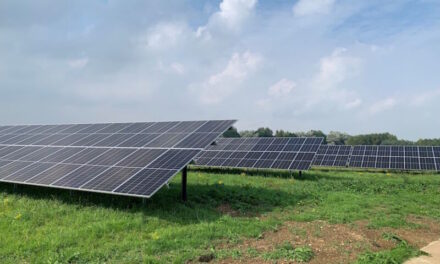 Peter Mingins, sector lead for utilities at geographical information systems provider Esri UK, discusses why geography has a key part to play in targeting the most suitable homes for the Green Deal.
Peter Mingins, sector lead for utilities at geographical information systems provider Esri UK, discusses why geography has a key part to play in targeting the most suitable homes for the Green Deal.
The Green Deal has huge potential to open up new revenue streams for the industry and is a crucial step towards meeting the UK’s carbon reduction targets. However, navigating all the data such as suitable buildings, demographics and debt figures to create an accurate picture of which homes will benefit most from the Green Deal will be challenging.
Using geographic information systems (GIS) to bring all the relevant information together and identify clusters of suitable homes for the Green Deal as well as managing the survey, installation and follow up processes, will enable energy professionals and local authorities to work collaboratively and reap the benefits the incentive has to offer.
Over 80% of the decisions we make have some form of spatial or geographical context and GIS takes the information we need to make those decisions, interpret and analyse the data, and visualise it all on one screen. This visual can then be shared with numerous stakeholders both within an organisation and with external partners.
Identifying citizens most likely to adopt
The first and most important step is to understand which households and types of home will benefit and are likely to adopt by examining all the available data. Using a combination of customer information, geographical features and operational data, organisations can start to build a scoring system to identify the most likely candidates.
Combining socio-demographic information including green preferences, incomes and household makeup with build environment data such as property age, type and area is a good place to start. Add to that operational data such as customer lifetime value, profitability and cost to serve alongside bad debt levels creates an insightful decision making tool for planning and operational management.
Scoring each customer to identify the most likely households to adopt the Green Deal is an important step but overlaying that data with geographic information can be a powerful combination. This enables organisations to see not only which customers are suitable but also which homes will benefit most from the Green Deal. For example property age is a strong indicator of insulation adequacy and buildings with a roof area and suitable elevation are a perfect fit for solar panels.
The key to choosing the most suitable clusters is to ensure that each home meets ‘The Golden Rule’ – when the energy generated by the deployment outweighs the cost of the implementation. According to our research this segment is about 13% of the UK population, which means it’s even more important for the industry to target their efforts on the right homes to minimise wasted resources on unsuitable buildings and consumers. Cross-referencing customer data with geographic information hones the focus into clusters of areas that are both suitable homes and customers for the Green Deal, maximising the chances for profitability and customer satisfaction.
Demonstrating the benefits
One of the main issues surrounding the Green Deal is a lack of consumer understanding of how it works and the benefits it could bring homeowners. Once you have a clear picture of which clusters will benefit most from the Green Deal, the next step is to communicate how the Green Deal will benefit those households specifically and how it will work in action.
Having the figures to demonstrate the financial value for homeowners is crucial. Utilities companies need to know exactly what types of return homeowners will get as a result of signing up to the Green Deal, and must be well equipped to explain exactly how they can reap these benefits from the scheme. Focusing the marketing on informing households of the specific benefits for their home for the Green Deal will greatly increase the likelihood of adoption, and enables the industry to make the best possible use of available resources.
Geo-location to manage site visits
The other area that geographic information systems can help with is scheduling. Knowing which areas are most suitable for the Green Deal means you can schedule in activity to happen all in one day to make the best use of resources and avoiding needless time spent travelling around to various areas. This will include aspects such as marketing, home visits, assessments as well as implementations.
While many energy providers and retailers are using advanced analytical methods to segment customers to identify homeowners most likely to adopt the Green Deal, few are using geography to ensure the home itself is suitable, or to identify clusters to tackle in a more efficient manner. Local authorities are even further behind without access to crucial customer intelligence or advanced analytical tools.
Getting the Green Deal right not only provides financial benefits to UK households, it will also help to create local jobs, improve profitability for utility companies, contractors and suppliers as well as play a crucial role in helping the UK to achieve its carbon reduction targets. Using customer data to score households to identify the most profitable opportunities for the industry alongside GIS to spot the most suitable homes is a powerful combination of intelligence that will ensure the UK can take advantage of all that the Green Deal has to offer.




